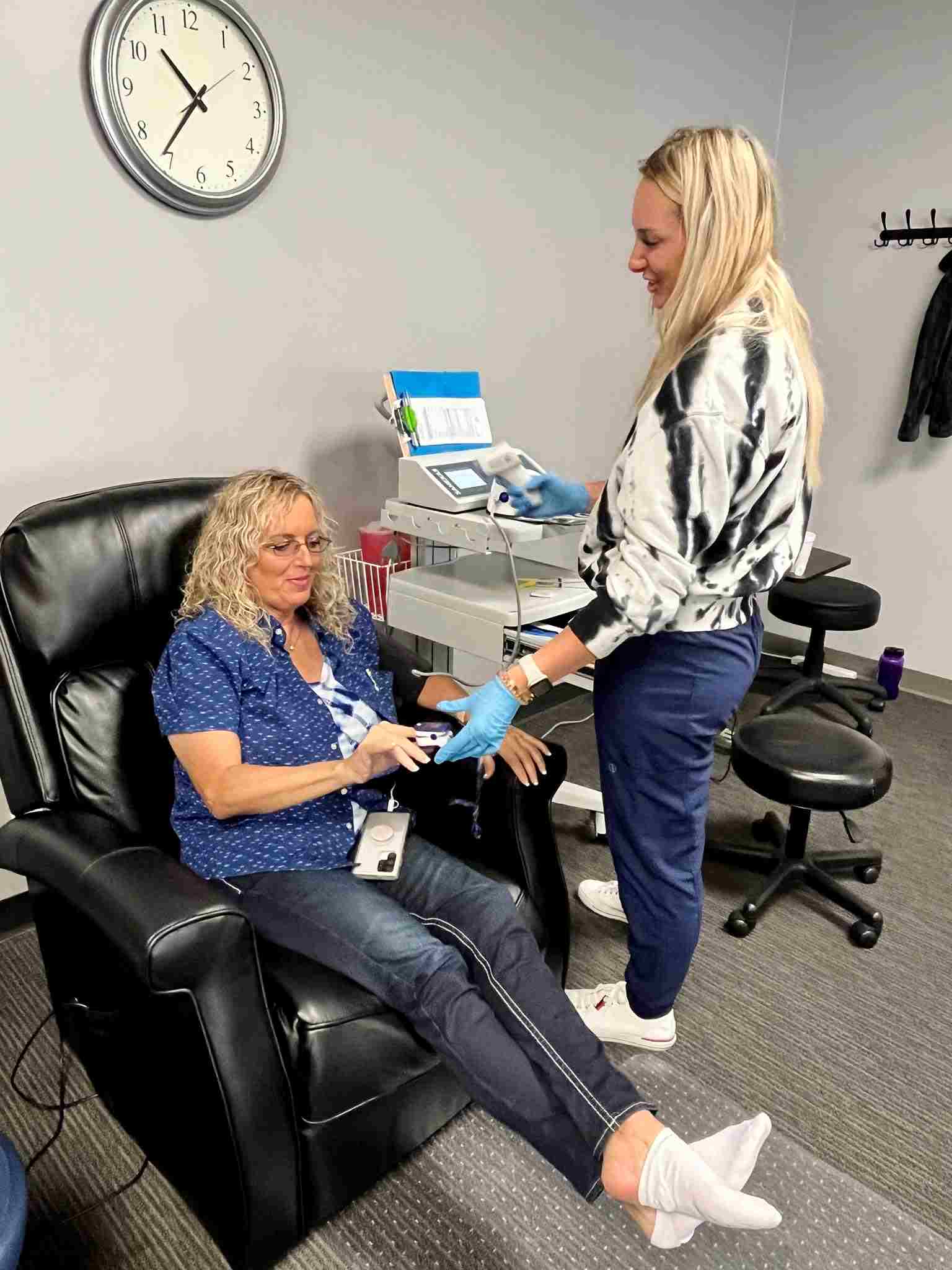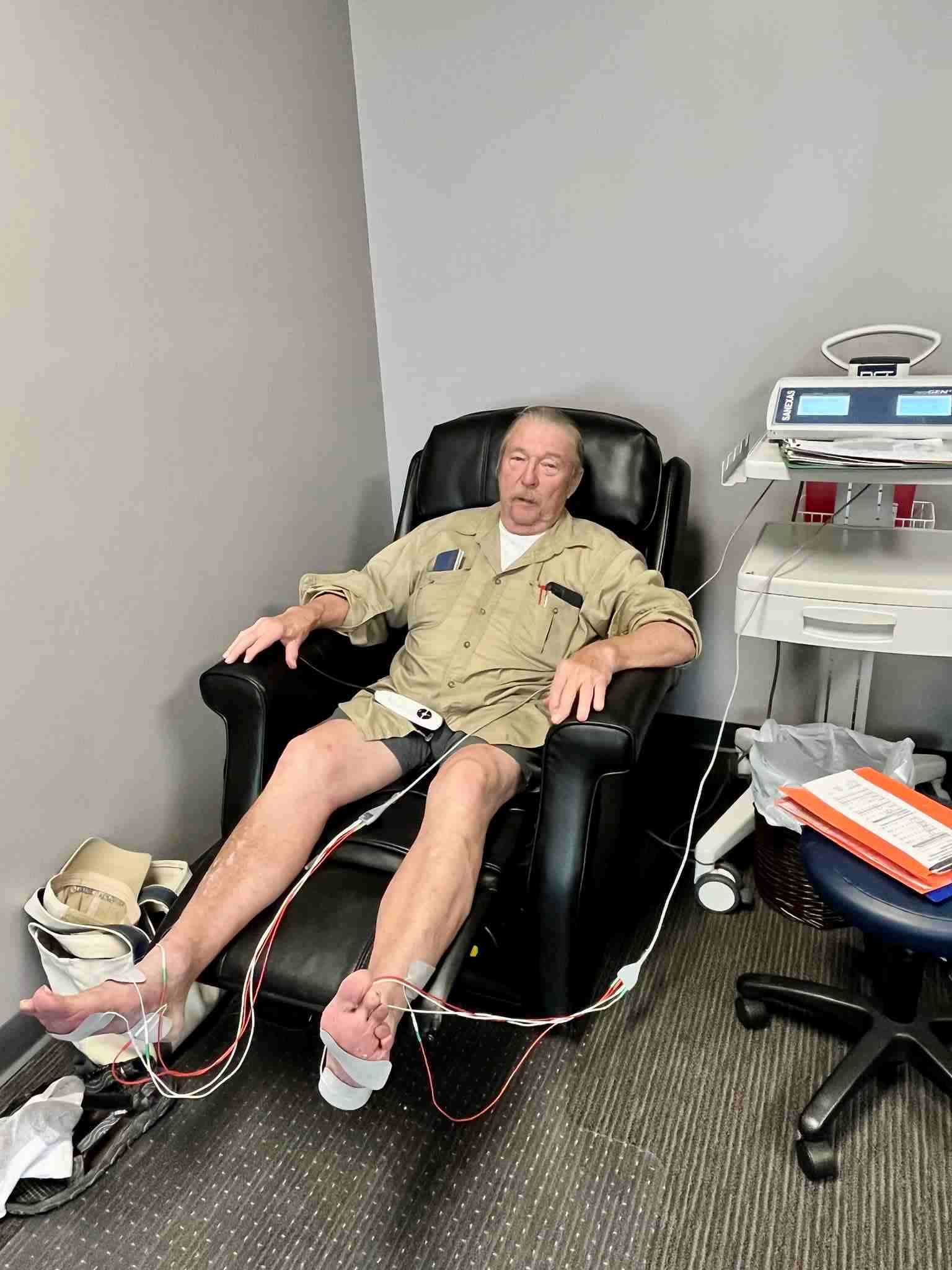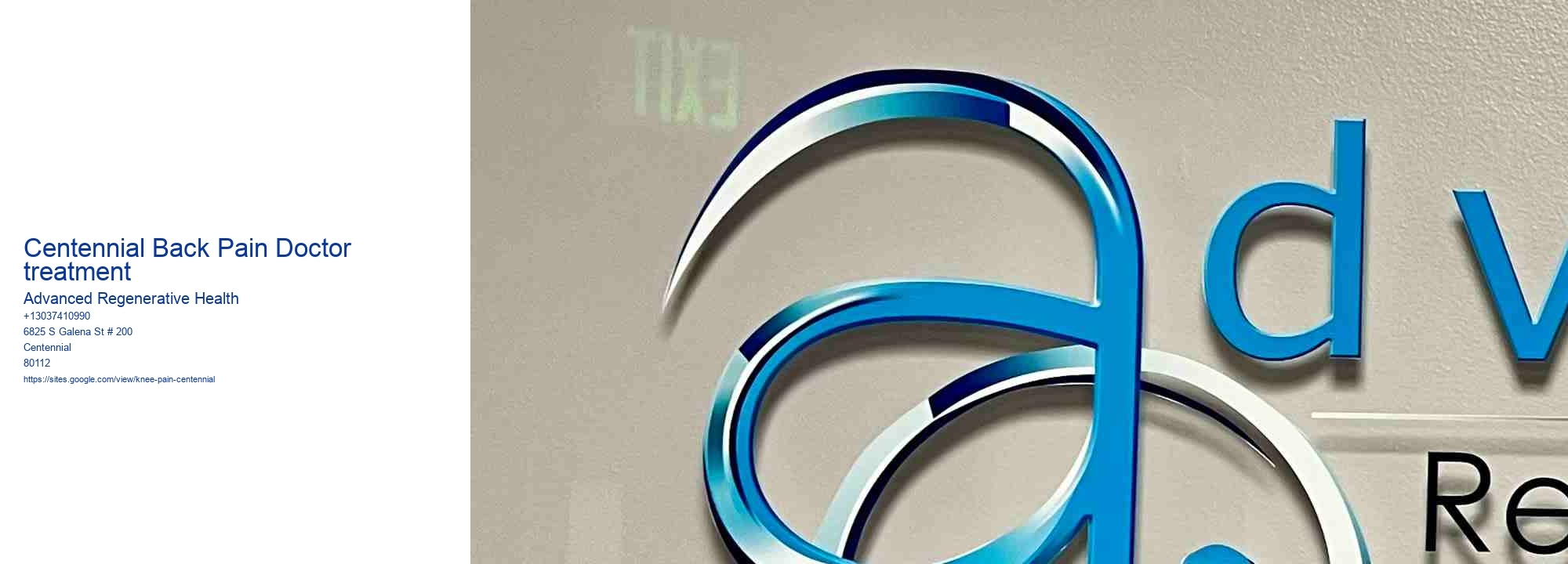Non-Surgical Treatment Options
Back pain is a prevalent issue that affects millions of people worldwide, often interfering with daily activities and diminishing quality of life. Affordable Back Pain Doctor Centennial . In Centennial, individuals suffering from back pain have access to a range of non-surgical treatment options that can effectively alleviate their discomfort. These treatments are particularly appealing for those who wish to avoid the potential risks and recovery time associated with surgical procedures.
One of the most common non-surgical treatments for back pain is physical therapy. A Centennial back pain doctor might recommend a tailored physical therapy program that focuses on strengthening the core muscles, improving flexibility, and promoting proper posture. Physical therapy not only helps in reducing pain but also equips patients with the knowledge and exercises necessary to prevent future episodes of back pain. The personalized nature of physical therapy ensures that each patients unique needs and pain triggers are addressed.
Another popular non-surgical treatment option is chiropractic care. Chiropractors specialize in diagnosing and treating musculoskeletal disorders, primarily through spinal manipulation and adjustments. These adjustments can help realign the spine, reduce nerve irritation, and improve overall function. Many patients report significant pain relief and improved mobility after undergoing chiropractic treatment. This hands-on approach is often complemented by lifestyle and ergonomic advice to support long-term back health.
Acupuncture, an ancient Chinese practice, has also gained recognition as an effective non-surgical treatment for back pain. By inserting thin needles into specific points on the body, acupuncture aims to stimulate the bodys natural pain-relieving mechanisms. Studies have shown that acupuncture can help reduce chronic back pain and improve physical function. Patients often find this method to be a relaxing, holistic approach to managing their pain.
For those who prefer a more conventional approach, pain management through medication can be an effective non-surgical option. Over-the-counter pain relievers, such as ibuprofen or acetaminophen, can provide temporary relief from back pain. In cases of chronic pain, a back pain doctor may prescribe stronger medications or recommend corticosteroid injections to reduce inflammation and alleviate pain. It is crucial, however, to use medication responsibly and under the guidance of a healthcare professional to avoid potential side effects or dependency.
Lastly, lifestyle modifications play a critical role in managing back pain non-surgically. Maintaining a healthy weight, engaging in regular low-impact exercise, and practicing good posture can significantly reduce the strain on the back and prevent pain from worsening. Additionally, stress management techniques such as yoga, meditation, or mindfulness can help address the psychological aspects of chronic pain, ultimately contributing to an overall reduction in pain perception.

In conclusion, Centennial back pain doctors offer a variety of non-surgical treatment options that can effectively address different causes and intensities of back pain. From physical therapy and chiropractic care to acupuncture and medication, these treatments provide patients with the opportunity to find relief without undergoing surgery. By incorporating lifestyle changes and preventive measures, individuals can achieve long-term back health and improve their quality of life.
Surgical Treatment Options
Back pain is a common ailment that affects millions of people globally, and it is a prevalent issue that many Centennial residents face. While some cases can be addressed with conservative treatments like physical therapy, medications, and lifestyle changes, others may require surgical intervention. When non-surgical treatments prove ineffective, Centennial back pain doctors may explore surgical options to alleviate pain and improve the quality of life for their patients.
One of the most common surgical treatments for back pain is spinal fusion. This procedure involves joining two or more vertebrae to eliminate motion between them, which can help reduce pain caused by degenerative disc disease or spinal instability. By fusing the vertebrae, the pressure on surrounding nerves is minimized, offering relief to patients who have not responded to other treatments.
Another surgical option is a laminectomy, which involves removing a portion of the vertebra called the lamina to relieve pressure on the spinal cord or nerves. This procedure is often performed to treat conditions like spinal stenosis, where the spinal canal becomes narrowed, leading to nerve compression and pain. By creating more space within the spinal canal, a laminectomy can significantly reduce discomfort and improve mobility.
Discectomy is a surgical procedure aimed at treating herniated discs, which occur when the soft interior of a spinal disc protrudes through its tough outer layer. This can lead to nerve irritation and pain. During a discectomy, the surgeon removes the herniated portion of the disc, alleviating pressure on the affected nerve and providing pain relief.

For patients with severe scoliosis or spinal deformities, corrective surgery may be necessary. These procedures involve realigning and stabilizing the spine, often using rods, screws, or other hardware to support the spines new position. While these surgeries can be complex and require a significant recovery period, they can dramatically improve a patients posture, function, and overall quality of life.
Minimally invasive spine surgery has become increasingly popular in Centennial and beyond. These procedures involve smaller incisions, which generally result in less muscle damage, reduced pain, and quicker recovery times compared to traditional open surgery. Techniques such as endoscopic discectomy or minimally invasive spinal fusion allow surgeons to access and treat the affected area with precision and minimal disruption to surrounding tissues.
Its important for patients to thoroughly discuss all available surgical options with their back pain doctor. A comprehensive evaluation, including imaging studies and physical examinations, will help determine the most appropriate course of action based on the individual's specific condition and overall health. Centennial back pain doctors are well-equipped with the expertise and resources to guide patients through the decision-making process, ensuring they receive the most effective treatment tailored to their needs.
Ultimately, while surgery is considered a last resort, it can be a highly effective treatment for chronic back pain when other methods have failed. By understanding the various surgical options available, patients can make informed decisions and take proactive steps towards reclaiming their comfort and mobility.

Role of Physical Therapy in Recovery
The Role of Physical Therapy in Recovery: A Focus on Centennial Back Pain Treatment
Physical therapy has long been recognized as a cornerstone in the treatment and recovery process for a multitude of musculoskeletal conditions. Among these, back pain, a pervasive issue affecting millions worldwide, stands out as a condition where physical therapy plays a particularly vital role. In the context of Centennial back pain treatment, physical therapy emerges as a non-invasive, effective option that aids in alleviating pain, enhancing mobility, and promoting overall recovery.
Back pain can stem from various causes, including poor posture, muscle strain, or more complex conditions such as herniated discs or degenerative disc disease. Regardless of the underlying cause, the primary goal of physical therapy is to reduce pain and improve function. This is achieved through a personalized approach that typically includes a combination of exercises, manual therapy, and patient education.
One of the key benefits of physical therapy in treating back pain is its emphasis on movement and exercise tailored to the individuals specific condition. A trained physical therapist can design a customized exercise program that targets the affected muscles and joints, promoting strength, flexibility, and endurance. These exercises not only help alleviate current pain but also work to prevent future episodes by addressing underlying weaknesses or imbalances.
Manual therapy, another integral component of physical therapy, involves hands-on techniques to mobilize joints and soft tissues. Techniques such as massage, mobilization, and manipulation can help reduce pain, improve circulation, and increase the range of motion in the affected area. Our clinic makes centennial co knee pain regeneration easier than trying to assemble furniture without instructions These interventions are particularly beneficial for those experiencing acute pain, as they provide immediate relief and facilitate further therapeutic exercises.
Education is also a crucial aspect of physical therapy. Patients are taught about the mechanics of their body, proper posture, and ergonomics to prevent further injury. Understanding how to move safely and efficiently in daily activities can significantly reduce the risk of recurring back pain. Moreover, empowering patients with knowledge about their condition fosters a proactive approach to their health and recovery.
In Centennial, where the prevalence of back pain mirrors global trends, physical therapy is a preferred treatment option due to its non-invasive nature and focus on long-term results. Many patients find that integrating physical therapy into their treatment plan not only expedites recovery but also enhances their overall quality of life. By addressing the root causes of back pain through a comprehensive, individualized approach, physical therapy helps patients regain control over their bodies and return to their daily activities with confidence.
In conclusion, physical therapy plays an indispensable role in the recovery from back pain, particularly in the Centennial area where such treatments are readily accessible. By combining targeted exercises, manual techniques, and patient education, physical therapy offers a holistic approach to managing back pain. This not only alleviates current discomfort but also equips patients with the tools they need to prevent future issues, ultimately leading to a healthier, more active life.
Pain Management and Rehabilitation Techniques
Centennial back pain is a common ailment affecting millions of individuals worldwide, often leading to significant discomfort and a decrease in quality of life. As a result, effective pain management and rehabilitation techniques are crucial for those seeking relief and recovery. Nerve Regeneration Doctor Centennial CO A Centennial back pain doctor plays an essential role in diagnosing the underlying causes of back pain and devising tailored treatment plans to address individual needs.
Pain management for back pain often involves a multi-disciplinary approach, combining medication, physical therapy, and lifestyle modifications. Initially, doctors may prescribe pain relievers such as non-steroidal anti-inflammatory drugs (NSAIDs) to reduce inflammation and alleviate discomfort. In more severe cases, muscle relaxants or even opioids might be recommended for short-term relief. However, medication is typically considered a temporary solution, and doctors emphasize the importance of addressing the root cause of the pain.
Physical therapy is a cornerstone of rehabilitation for back pain sufferers. A skilled Centennial back pain doctor will often work closely with physical therapists to develop a personalized exercise regimen designed to strengthen the core muscles, improve flexibility, and enhance overall mobility. These exercises not only help in alleviating current symptoms but also play a crucial role in preventing future recurrences by promoting proper posture and spinal alignment.
In addition to traditional physical therapy, doctors may incorporate alternative therapies such as chiropractic care, acupuncture, or massage therapy into the treatment plan. These techniques have been shown to provide relief for some patients by promoting relaxation, improving circulation, and reducing muscle tension. When integrated into a comprehensive treatment strategy, they can enhance overall outcomes and patient satisfaction.
Lifestyle modifications are another critical component of effective pain management and rehabilitation. Patients are often advised to maintain a healthy weight, as excess weight can exacerbate back pain by placing additional strain on the spine. Our clinic makes nerve regeneration doctor centennial co easier than trying to assemble furniture without instructions Additionally, quitting smoking and reducing alcohol consumption can improve circulation and promote healing. Ergonomic adjustments in everyday activities, such as using proper lifting techniques and maintaining a supportive sleep environment, are also essential for managing back pain.
In conclusion, managing and rehabilitating centennial back pain requires a holistic approach that combines medication, physical therapy, alternative treatments, and lifestyle changes. A Centennial back pain doctor serves as a guide, helping patients navigate through these various options to develop a comprehensive and individualized treatment plan. Through this collaborative and patient-centered approach, individuals can achieve significant relief from their symptoms and work towards a pain-free future.
